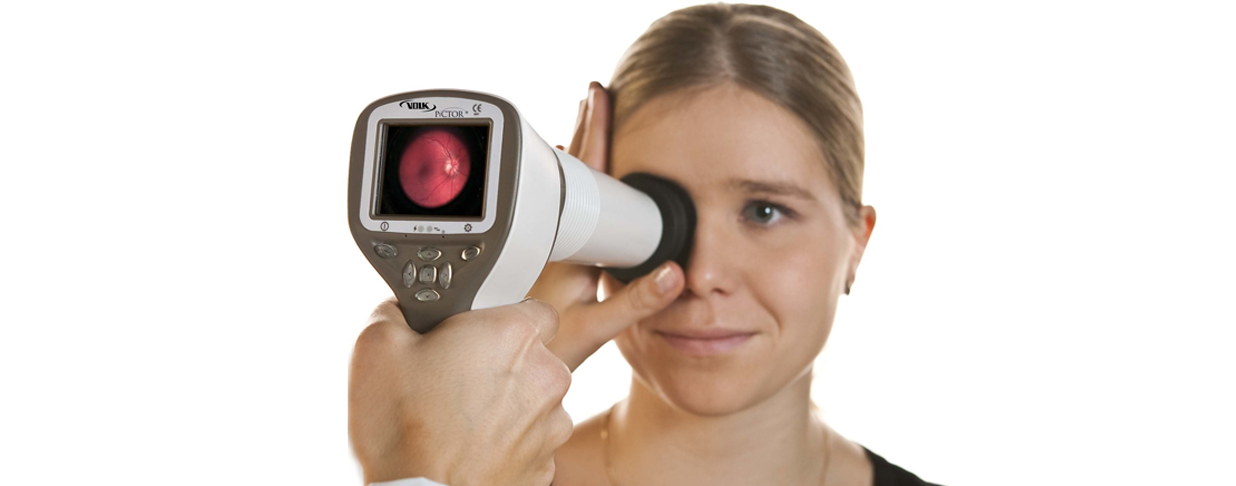It's a new year, and for many vision benefit members, the start of a new plan year. It's time to sit down with employees and have "the talk." And this time, consider letting the conversation get a little blue.
I don't mean the melancholy kind of blue. I’m talking blue light and how employees' vision benefits can protect them from a hazard they can’t see.
Blue light is emitted from digital screens, the sun’s rays and other sources. Though some blue light is needed to elevate our moods and regulate our circadian rhythms, too much blue light, at bedtime in particular, can harm our retinas, and cause sleep and other health issues.
This is partly because blue light — the natural spectra of light visible to the eye — has a very short wavelength, so it produces a high level of energy. Energy is good thing, but excessive blue light can be too much of good thing.
The science on blue light is still developing; however, there is already enough evidence to seriously consider playing it safe by wearing blue light-filtering lenses.
Fortunately, there are lens technologies covered by EyeMed that can help manage the potentially harmful effects of blue light—even for those who don’t need corrective lenses.
Blue-biquitous
To appreciate the potential downside of blue light, it helps to first understand its pervasiveness. In short, it’s everywhere. Just look up from your own screen, glance to your left and to your right. You can’t see it, but it’s there.
In addition to digital devices and the sun, blue light may emit from fluorescent and LED lighting and flat-screen televisions. This means every time you flip on an indoor switch, check a text message, read a news story on your laptop or play a game on your tablet, you’re upping your eyes’ exposure.
And we’re talking about significant levels. The average person spends 7.4 hours a day looking at digital devices. Kids from the ages of 8 to 18 spend more than 7 hours a day absorbing electronic media, according to the Kaiser Family Foundation. That’s disturbing because a child’s eyes are not fully developed before age 10.
The result: Nearly 2/3 of us (65%) suffer from digital eye strain, causing eye dryness, irritation and blurry vision, according The Vision Council’s 2016 Digital Eye Strain Report. Extended exposure to blue light also has been shown to contribute to early-onset age-related macular degeneration (the leading cause of vision loss among those 40 and older) as well as sleep deprivation, through the suppression of our bodies’ melatonin.
More than one way to protect
While our eyes’ natural filters do not provide sufficient protection from blue light, the rose-colored news is that technology can, in 2 ways.
- Advanced filtering technology can be built directly into the lens material during the lens manufacturing.
- Filtering coatings can be applied to the lens after manufacturing.
Both approaches filter blue light, though a review of lenses by LensCrafters optical manufacturing experts suggests lenses made with the blue light-filtering material built in may work better. Either way, it’s essential the lens filters blue light from sources like digital screens, and doesn’t merely distort the colors.
No matter which solution a member’s provider recommends, EyeMed’s benefits cover a range of blue light lens solutions to meet varying needs. For example, LensCrafters’ Featherwates® Blue IQ® lenses incorporate blue light protection directly into the lens material. Lenses like DuraVision BlueProtect® by ZEISS, available through other eye doctors in the EyeMed network, offer anti-reflective blue light coating.
These are just 2 of the many options that eye doctors may recommend. Members should consult with their eye doctors for the lenses that are best for them. Related options to discuss include finishes (anti-reflective) and materials (polycarbonate).
Finally, when addressing the blues, it’s best to color it warm. Blue light-filtering lenses that have a slight yellow, amber, orange or red tint are optimal for shielding your retinas, according to the American Optometric Association.
Help members learn the blue light basics
Get members off to a healthy start to the year. Before visiting the eye doctor for that important annual eye exam, employers can help members learn about these blue light essentials and lens options. Simply share these story links from Eyesite On Wellness, EyeMed’s award-winning consumer eye health information site:
- Stave off the blues: Specially designed lenses can filter potentially harmful blue light
- Blues clues: Detecting the effects of blue light on kids’ vision
With this simple vision information, and awareness about their vision benefit coverage of blue light-filtering lenses, members can experience a happier kind of blues this year and beyond.




